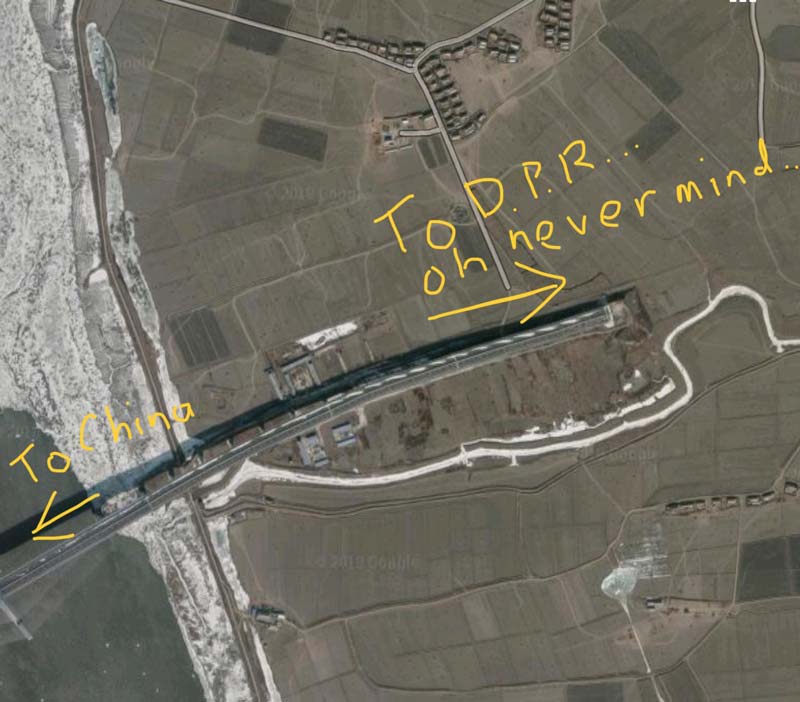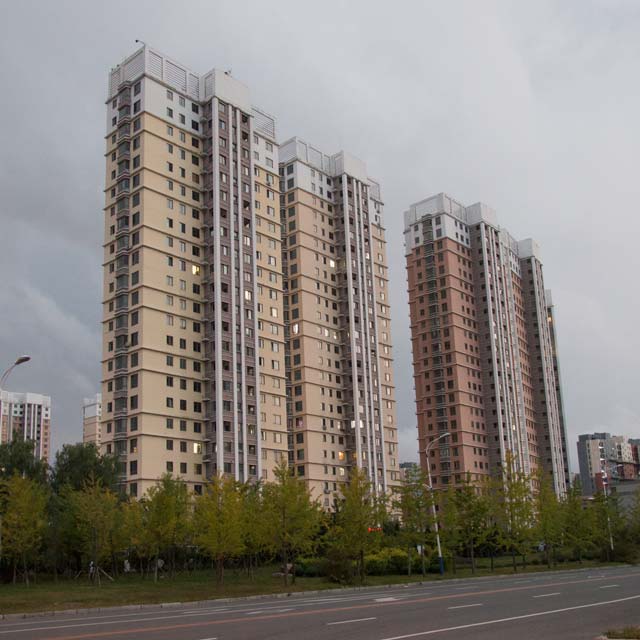Dandong, in north-eastern China, is a city of nearly a million people that has grown up around one of the few border crossing points between China and the Democratic People’s Republic of Korea (aka North Korea).
The border itself runs down the middle of the Yalu river in this region. The present bridge across the river, currently known as the Sino-Korean Friendship Bridge, was built by the Japanese Empire in the late 1930s, who ran things on both sides of the river in those days.
Fast forward a few more years: the Japanese had been kicked out and the Communists had taken over in both China and North Korea. When the Korean War kicked off, the UNC forces led by the United States were doing quite well, when the Chinese thought they’d better intervene before their North Korean buddies were completely overrun. In an attempt to stop the Chinese crossing over, the US bombed the Friendship Bridge, carefully sticking to blowing up the section on the Korean side of the borderline so as not to provoke the Chinese too much.
After the war, the bridge was patched up, and serves to this day. It has a single train track and single lane for road traffic, though only one of these can be used at a time.
Both China and the DPRK agreed it would be great to bring things into the 21st century by building a new modern bridge, and a site was duly identified about 10 km downriver. The DPRK is perennially short of cash due to almost every developed country in the world being a bit scared of them. They therefore asked if China would please help out by footing the bill for the new bridge as a kind favour to their socialist neighbours, which they eventually agreed to.

The Chinese went all out on the project, starting in 2011 and building not only a 4-lane cable-stayed bridge 3 km long and costing over $300 million, but also building most of a new city around their end of the bridge. Three years later, in 2014, the Chinese called up the North Koreans and announced that everything was ready, and would they please hurry up and finish off the mile or two of road on their side to connect the new bridge to the nearest road so they could go ahead and cut the ribbon.
“Oh yes, about that”, said the DPRK, “well the thing is, we’re still a bit short of cash, so would you please help us out and build the connecting road on our side too?”
“Whaaaaaatt???” yelled the Chinese…. “We build a huge new bridge for you for free, and you can’t even be bothered to build a mile of road?!”

And so things have stayed, with the New Yalu River Bridge simply ending in a paddy field on the DPRK side, with neither side willing to pull their finger out and finish the job. High-rise apartment buildings stand almost empty, and weeds are growing in the gutters of the glass pavilion on the Chinese side of the New Yalu River Bridge where visitors should have been able to stand and admire this putative symbol of cooperation and economic progress.
Meanwhile, in downtown Dandong, buses and trucks often have to wait for hours to get across the bridge, and can often be seen backed up down the main street waiting to get in to the customs inspection point to cross the old Friendship Bridge, which shakes ominously each time a train rumbles across.
Fail to cross the New Yalu River Bridge with YPT on one of our many North Korea tours!





